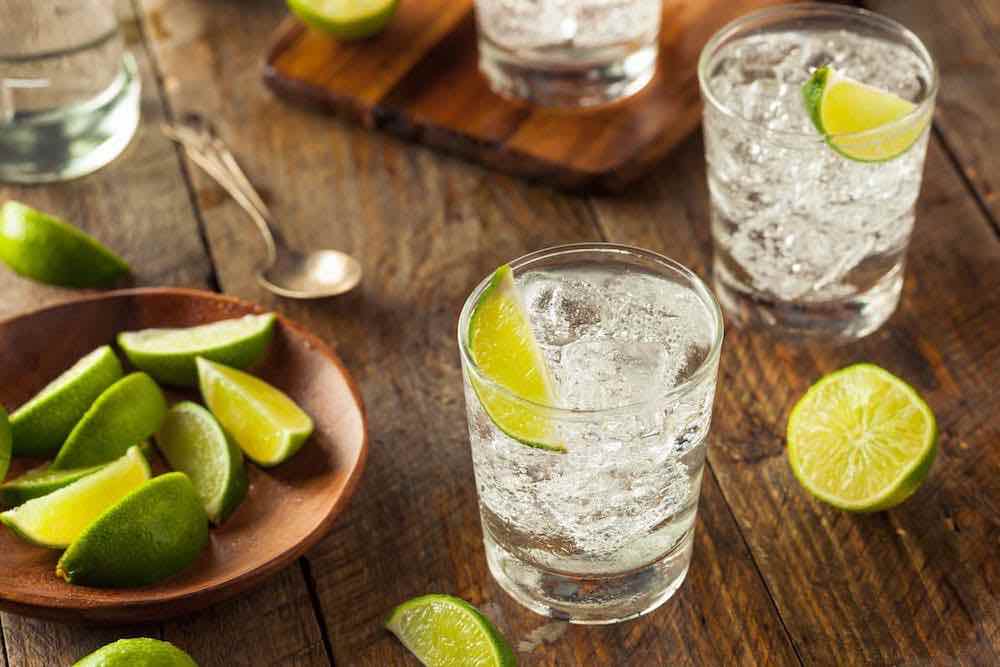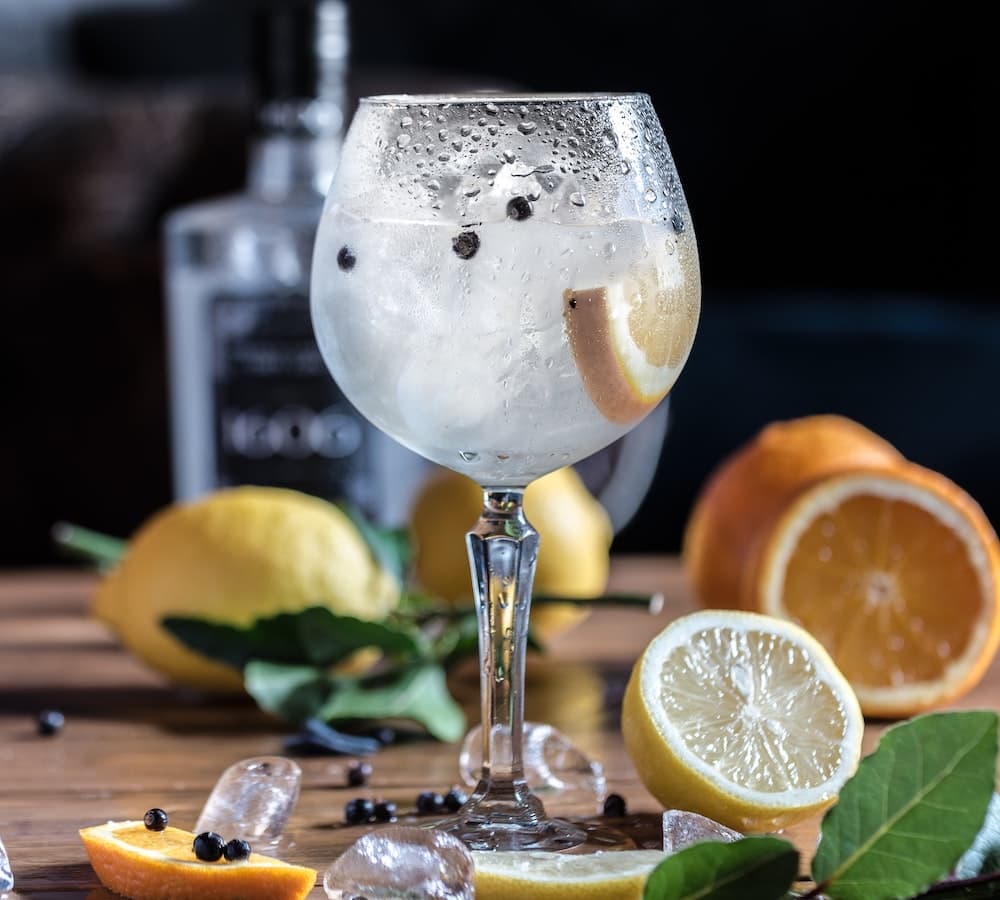Tonic water was developed as a healthy combination of quinine and sparkling mineral water. Though quinine was used to prevent and cure malaria, it was thought to be good against fevers of all kinds and generally good for you, sort of like antioxidants today.
But from its earliest days, quinine (and the cinchona bark from which it was isolated) was used in sweetened beverages to disguise its bitter taste—particularly sweetened alcoholic beverages. One early tonic water advertisement from 1861 stated that “a small portion of wine or French brandy may be required to be added to the ‘Tonic Water:’ Wine in those more easily stimulated, and brandy where a more potent adjunct is requisite.”
Of course, the alcohol we most associate with tonic water is gin, and so far the earliest reference to that drink I found is in an 1868 publication called The Oriental Sporting Magazine. The article made casual reference to the Gin and Tonic among other cocktails like the Brandy and Soda, consumed by Brits partying after a horse race in India. Clearly it wasn’t being enjoyed for purely medicinal reasons at the time, but for recreational ones.
References to the Gin and Tonic grow more frequent in India in subsequent decades, and then the cocktail shows up in the early 1900s in Buenos Aires with the British abroad there, too. Though many people needed the medication quinine in subsequent years (particularly in WWII during fighting on tropical islands), the cocktail was very much associated with the English due to the mixer. When both sugar and quinine were rationed during the war, the Schweppes company even advertised: “If we had some gin we’d have a Gin and Tonic if we had some Schweppes.”

The early tonic waters certainly contained more quinine than modern ones, as several writers of the 1940s including Charles H. Baker (The Gentleman’s Companion) and David A. Embury (The Fine Art of Mixing Drinks) warned against consuming too many in one sitting to avoid the common side-effects of quinine toxicity. Today, the maximum amount of cinchona alkaloids allowed in beverages is regulated.
After the war, Schweppes and other tonic water brands advertised heavily in the United States market, emphasizing the Britishness of the product and recommending its combination with gin. The cocktail became the everyday staple that it remains today.

The Gin and Tonic has undergone two different revivals in recent decades. In the United States, bartenders during the craft cocktail renaissance began making their own tonic syrups from cinchona bark in their efforts to create every bar ingredient possible from scratch. These cinchona syrups are added to soda water to make tonic, and then gin is added to that. But because they’re made from bark, these syrups are brown in color and usually quite tannic—a far cry from the clear bottled tonic water available at the store. These products also can cause some of the same quinine toxicity side effects warned against by Baker and Embury if they’re not well-filtered. More information on the safety of homemade tonic syrup can be found on CocktailSafe.org.
In Spain, a different G&T revival took place. There, the simple cocktail underwent a transformation from an understated drink served in a small glass into a cocktail statement served in a giant red wine goblet. The drink might come garnished with cucumbers, orange peels, spices, and any number of fruits and vegetables in dramatic fashion, sort of how Bloody Marys are often served in sports bars in the US.
The Spanish “Gin-Tonic” trend caught on in Europe and shortly thereafter in America. Bars, whether Spanish-themed or not, began serving the drink in these big wine goblets with a choice of gins and flavored tonic waters, and the garnishes to match. While the trend probably peaked a few years back, plenty of bars and restaurants around the world still feature Gin and Tonic programs. From a medicinal beverage to a modern classic, the Gin and Tonic has taken many forms.



